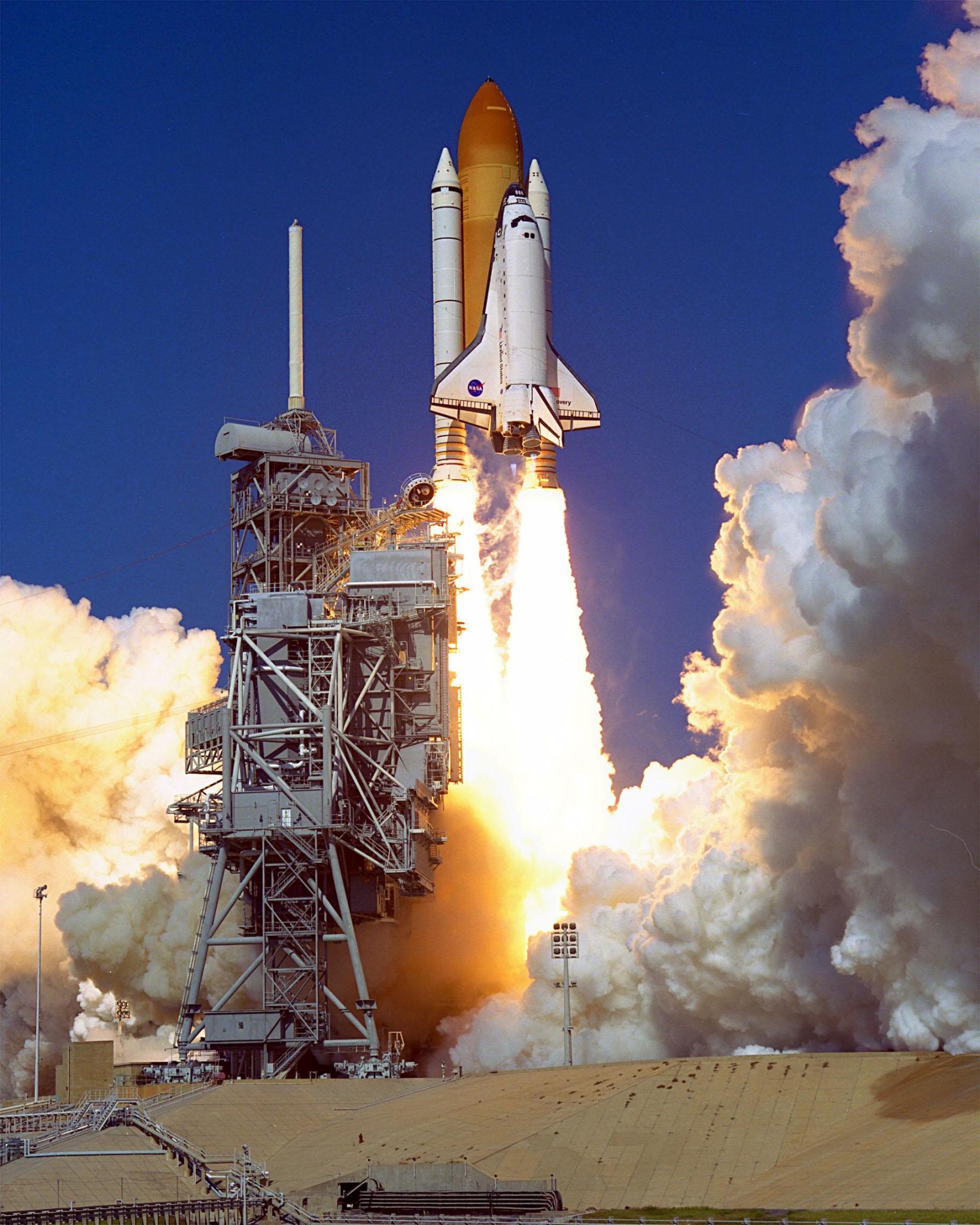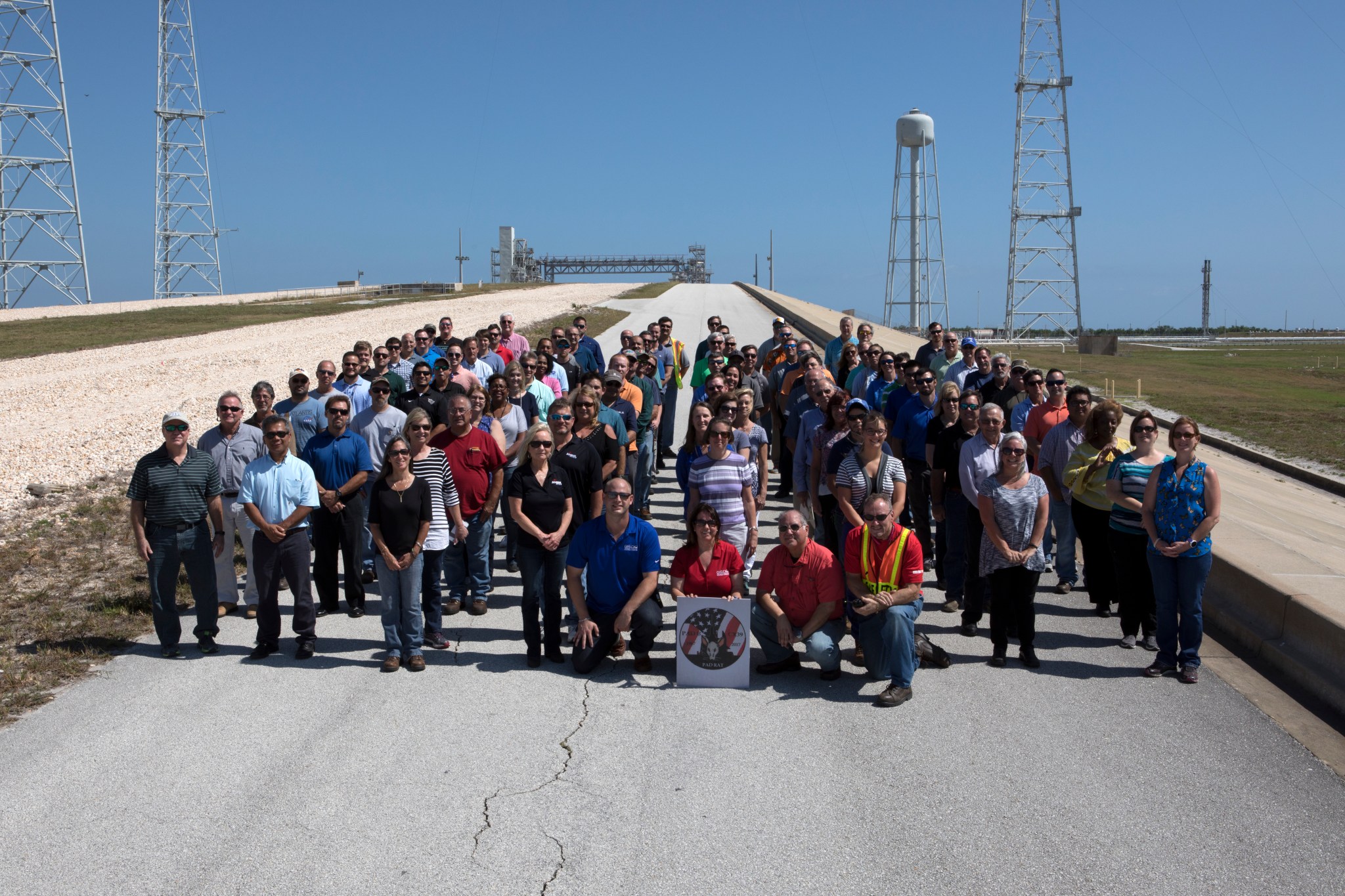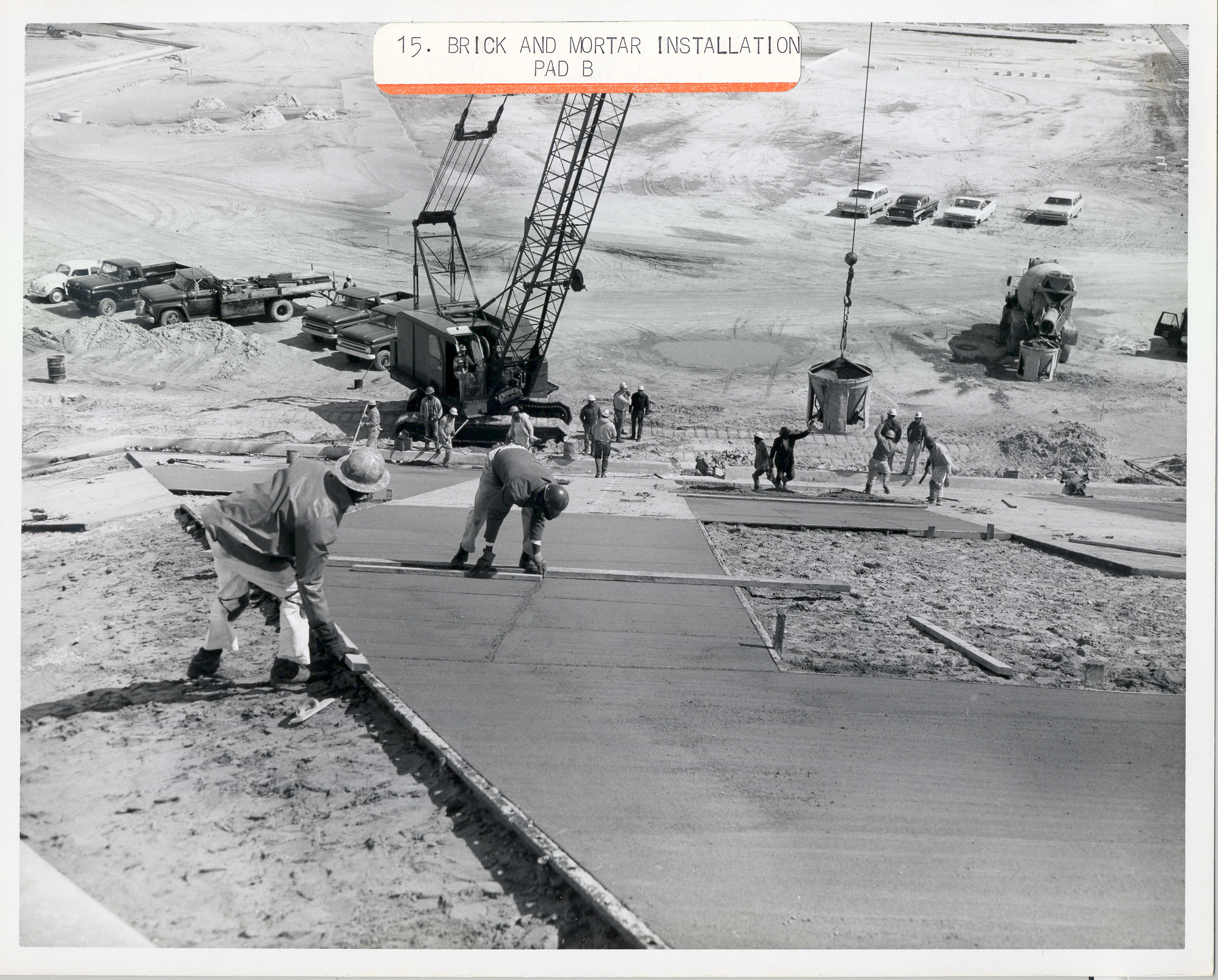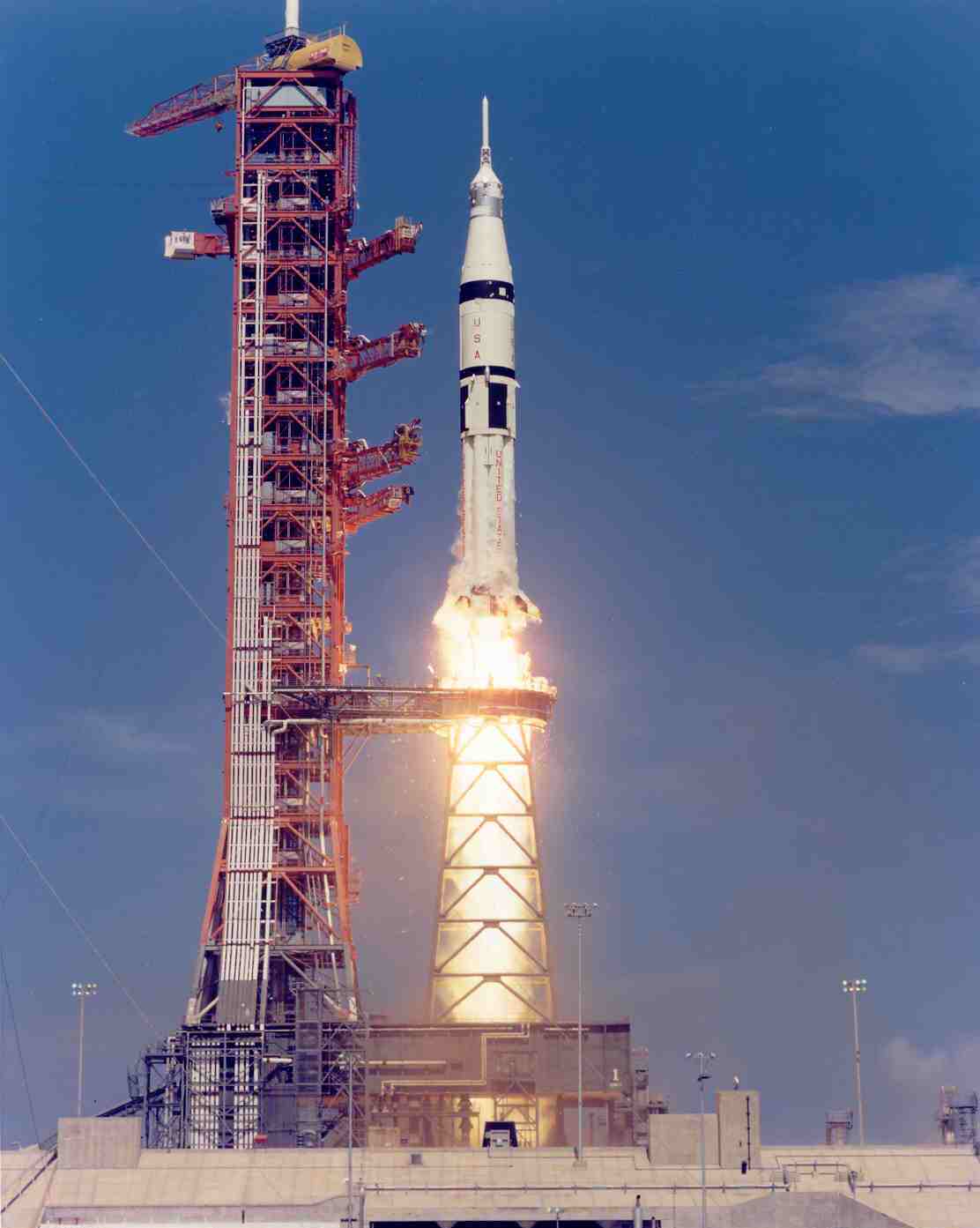By Linda Herridge
NASA’s John F. Kennedy Space Center
Launch pads built on a swamp. A humble beginning for the two pads, A and B, at Launch Complex 39 at NASA’s Kennedy Space Center in Florida. They were originally constructed in the 1960s as clean pads and served as a starting point for Apollo and our journey to the moon. Now, Launch Complex 39B will serve as the launch site for the agency’s Space Launch System rocket and Orion spacecraft on deep-space missions, including the journey to Mars.
Time flies, and NASA is celebrating the 50th anniversary of pad B, the launch site for one Apollo/Saturn V launch, three Skylab missions using the Saturn 1B rocket, one Apollo-Soyuz Test Project mission that also used a Saturn 1B, and 53 space shuttle launches.
Construction of the pad began in December 1964 and was completed in April 1967.
To fill in and build up the area, hundreds of tons of sand was dredged from the Atlantic Ocean and pumped along a road to pad B. The behemoth structure of the pad required 68,000 cubic yards of concrete and 5,100 tons of reinforced steel.
Drawings of the original pad B were completed by Giffels and Rosetti Inc. of Detroit in October 1964. Construction of the complex was completed by George A. Fuller Co. in Los Angeles. Design and construction supervisors were the Canaveral District of the U.S. Army Corps of Engineers.
The complex consisted of the launch pad, fuel and oxidizer facilities, environmental control system room, pad terminal connection room, camera stations, electrical equipment buildings, a water chiller facility, an emergency egress facility, and operations offices. The only major difference between Pads A and B is that Pad B sits seven feet higher (55 feet) above mean sea level.
The first launch from pad B was Apollo 10 on May 18, 1969. It also was the first use of the pad’s water deluge system, used to cool the flame deflector in the flame trench after rocket ignition.
“It was a good feeling to see that launch,” said Gene McDilda, who was a propellant mechanic with NASA and worked prelaunch testing. He watched the launch from the west side of the Vehicle Assembly Building. He worked at Cape Canaveral Air Force Station and Kennedy for more than 40 years.
Pad B was used to launch three of the four missions of the Skylab program. The crewed missions were Skylab 2 on May 25, 1973; Skylab 3 on July 28, 1973; and Skylab 4 on Nov. 16, 1973. The crewed Apollo-Soyuz Test Project mission launched from pad B on July 15, 1975.
Work to modify the pad for the Space Shuttle Program began in 1979. In October 1980, a $6.7-million contract was awarded to W&J Construction Corp. of Cocoa, Florida, to install the ground support equipment within the pad B complex. The work included installation of pipes and cable to carry fuels, fluids and air to the Fixed Service Structure and the Rotating Service Structure on the surface of the pad.
Additional work at the pad was completed by Saver Mechanical Inc. of Jacksonville, Florida, and the Holloway Corp. of Titusville. Modifications to accommodate space shuttles were completed in late 1985.
The pad was officially activated by “Buz” Brown, who was the site manager for ground support equipment with Martin Marietta from 1980 to 1984.
The first space shuttle launch from pad B was Challenger, on STS-51L, on Jan. 28, 1986. Pad 39B became the principle launch pad for the first Return to Flight mission lifting off on Sept. 29, 1988.
Bruce Simmons, with ERC on the Test and Operations Support Contract, is the flow manager for pad B. Simmons has worked at Kennedy Space Center for 38 years, most of it at pads A and B. His father, Albert Simmons, was on the construction crew for both pads, so there is a family history and connection for Simmons.
“I watched from near the KSC Press Site as Discovery lifted off from pad B on the return to flight mission, STS-26,” Simmons said. “It was one of the launch team’s proudest moments.” (Note: space shuttle launches did not always launch in numerical order.)
Pad B was the liftoff site for STS-31 (carrying the Hubble Space Telescope) on April 18, 1990, and STS-61 (Hubble’s first servicing mission) on Dec. 1, 1993. The first flight of Endeavour, on STS-49, on May 7, 1992, and John Glenn’s return to space, on STS-95, on Oct. 29, 1998, also began from pad B.
Steve Bulloch is the NASA Pad Daily Operations manager. He joined NASA at Kennedy Space Center in 1989. Before that he worked for the Department of Defense during space shuttle Challenger recovery.
Bullock accompanied about 10 shuttles on ferry flights back to Kennedy. His first ferry flight was Endeavour’s transport from Palmdale to Kennedy. He worked offload and onload at Edwards Air Force Base in California, where 34 shuttle missions that originated from pad B glided to a stop.

“I worked in operations around the center,” Bulloch said. “Then, in 1996, I began working in pad operations. When I had the opportunity to do some shuttle landing recovery work, I jumped at the chance.”
Space shuttle Discovery’s STS-116 mission was the final liftoff from pad B, on Dec. 8, 2006. Afterward, the pad was modified to handle the launch of NASA’s Ares 1-X rocket on a test flight Oct. 28, 2009. New lightning towers were constructed and installed around the pad in 2009.
In 2011, after the final space shuttle mission, STS-135, launched from pad A, dismantling of the fixed service structure and rotating service structure began on pad B to create a clean pad capable of handling a variety of launch vehicles. Old wiring was removed. The hypergolic propellants and fluids were drained. The pipes that carried these commodities were opened and safed, and the pad was officially turned over to the United Space Alliance demolition team.
The orbiter access arm and gaseous oxygen arm were preserved and are now on display with space shuttle Atlantis at nearby Kennedy Space Center Visitor Complex.
As NASA prepares for the first flight of the Orion spacecraft atop the SLS rocket, modifications to pad B are underway. These include new communications and wiring system; replacement of the Environmental Control System; new heating, ventilation and air conditioning systems; and replacement of various water system pipes within the pad perimeter. Installation of new ignition overpressure/sound suppression bypass valves at the valve complex; reinforcement and replacement of the pad surface crawlerway; and refurbishment of the pad’s cryogenic propellant storage spheres also are underway.
In the flame trench, construction workers have installed all of the heat-resistant bricks, in three different sizes, to the walls using bonding mortar in combination with adhesive anchors. The flame trench will be able to withstand temperatures of up to 2000 degrees Fahrenheit at launch of the rocket’s engines and solid rocket boosters. A new flame deflector will divert the rocket’s exhaust, pressure and heat to the north side of the flame trench.
Two side flame deflectors, repurposed from space shuttle launches, are being refurbished and will be reinstalled at pad level on either side of the flame trench to help reduce damage to the pad and the SLS rocket.
“We are now part of the multi-user spaceport,” Bulloch said. “It’s a big change from being the single user for so many years.”
The area at and around the pad is now protected wetlands. NASA shares a boundary with the Merritt Island National Wildlife Refuge and conducts environmental studies periodically inside and outside the pad fence boundary.
“It’s always been about being able to conduct highly technical operations without harming the environment,” Bulloch said.





























